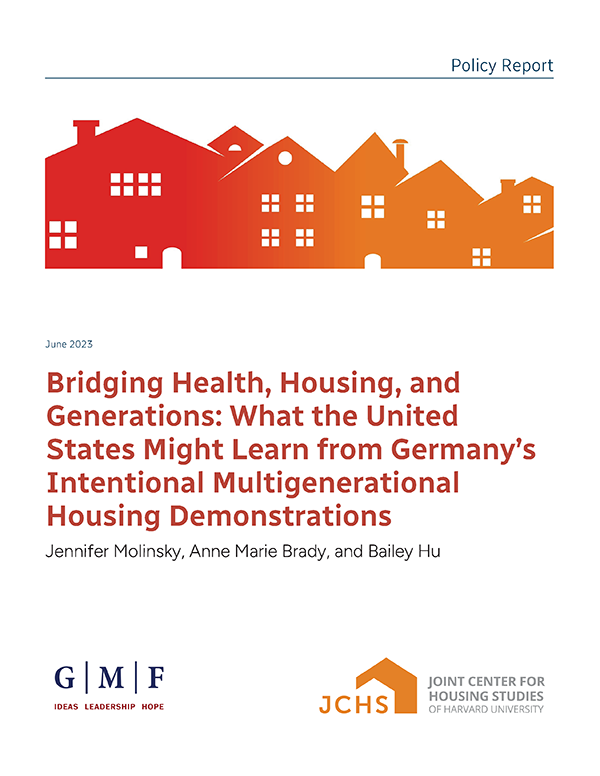Bridging Health, Housing, and Generations: What the United States Might Learn from Germany’s Intentional Multigenerational Housing Demonstrations
Population aging and housing affordability challenges are driving an interest in alternative housing options in countries around the world. Older adults’ desires to age as independently as possible in their choice of housing and community, widespread affordability challenges, and concern about social isolation and loneliness have led to an interest in shared, multigenerational housing settings. One variation of these are intentional multigenerational communities, in which a range of households—including families with children as well as single people and couples of all ages—live in their own units within a shared property with the intent of sharing in community life and offering each other mutual support. Policymakers, including those in many European countries, are seeking ways to support these communities. This report sets out findings from a study of Wohnen für (Mehr)Generationen, a pilot program in Germany that helped support 30 innovative housing projects across the country.
In 2009 the German Federal Ministry of Family, Seniors, Women, and Youth (BMFSFJ) launched Wohnen für (Mehr)Generationen – Gemeinschaft stärken, Quartier beleben (Housing for Multiple Generations – Strengthen Community, Invigorate Neighborhoods) to encourage new and alternative forms of shared and/or multigenerational housing. The objective of the demonstration program was to provide a platform to advance innovative approaches for shared and/or multigenerational living though housing developments and to disseminate these new forms of housing to a wider audience.
The program provided grants to 30 projects between 2009 and 2015. The funding, which supported design and development work, was relatively modest in comparison to overall project costs. Projects were selected through a national competition, with selection criteria focused on how well the proposed community supported the self-determination and independence of residents, including enabling aging residents to maintain their lifestyles even when extended care was needed. Other criteria included: the extent of self-organization, community spirit, and mutual support between generations; a contribution to neighborhood revitalization; and the engagement of citizens and civil society. Projects also had to incorporate universal design principles and demonstrate active involvement with the municipalities in the design and development of the projects.
The Wohnen für (Mehr)Generationen pilot has not been formally evaluated. In 2019, the Office of Policy Development and Research of the US Department of Housing and Urban Development (HUD) awarded a Research Partnership grant to the German Marshall Fund, with the Harvard Joint Center for Housing Studies as a subgrantee, to examine the program and draw lessons for the United States. The German Marshall Fund also supported the project with funds that matched the HUD grant award. This report presents findings from case studies of five of the Wohnen für (Mehr)Generationen-funded communities as well as interviews conducted in the United States with housing professionals, advocates, and others engaged in the development and operation of multigenerational communities.

